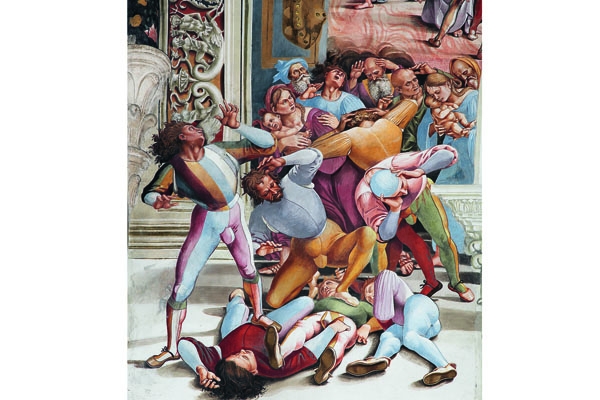Like all self-respecting geniuses, Raphael (1483-1520) died young at the age of 37. For over a decade, he had been based in Rome, and had enjoyed fame, wealth and success beyond the dreams of almost any other artist of the day (Leonardo and Michelangelo were his only rivals). His standing in the highest circles — and above all in the eyes of the Pope — meant he was accorded the unprecedented honour, for one of his artistic calling, of being buried in the Pantheon.
Artistic celebrity of this order did not guarantee the preservation of biographical minutiae, however, and we know almost nothing about what Raphael was actually like. The first biography of him was published by Vasari, in the original 1550 edition of his Lives of the Artists, and on the personal front, it is clear that it trades in hearsay as opposed to established fact. The number of letters written by him to have survived is very few, and most of them are public as opposed to private. One or two Raphael drawings share the paper with scribbled drafts of bad love poems, but they too are singularly uninformative.
The consequence of this state of affairs is that it is not really possible to write a life — or even a life and works — of Raphael. Regardless of its subtitle, Antonio Forcellino’s book is much closer to a bonkbusterish novel than to a conventional biography, and betrays almost all the faults of that sinister genre.
Forcellino is fearlessly unabashed when it comes to making things up, and in particular tiresomely fixated on Raphael as the Latin lover par excellence, admittedly following Vasari’s account of his death as a consequence of amorous excesses.








Comments
Join the debate for just £1 a month
Be part of the conversation with other Spectator readers by getting your first three months for £3.
UNLOCK ACCESS Just £1 a monthAlready a subscriber? Log in